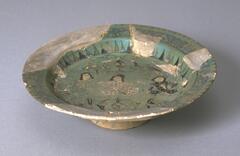Search could not be completed: Search error: [400] {"error":{"root_cause":[{"type":"query_shard_exception","reason":"Failed to parse query [(artist:\"Futura \"2000\") AND resource_type:1 AND (access:1)]","index_uuid":"fAYnSYs9QNCor1yFcuGsQA","index":"resources"}],"type":"search_phase_execution_exception","reason":"all shards failed","phase":"query","grouped":true,"failed_shards":[{"shard":0,"index":"resources","node":"W-9cdKH6TLWivxyCUZmPIQ","reason":{"type":"query_shard_exception","reason":"Failed to parse query [(artist:\"Futura \"2000\") AND resource_type:1 AND (access:1)]","index_uuid":"fAYnSYs9QNCor1yFcuGsQA","index":"resources","caused_by":{"type":"parse_exception","reason":"Cannot parse '(artist:\"Futura \"2000\") AND resource_type:1 AND (access:1)': Lexical error at line 1, column 60. Encountered: <EOF> after : \"\\\") AND resource_type:1 AND (access:1)\"","caused_by":{"type":"token_mgr_error","reason":"Lexical error at line 1, column 60. Encountered: <EOF> after : \"\\\") AND resource_type:1 AND (access:1)\""}}}}]},"status":400}artist:"Futura 2000"
26 UMMA Objects
26 UMMA Objects
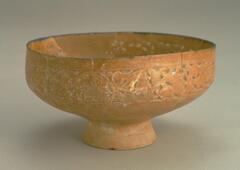
Iranian (Iranian)
Footed Bowl with openwork floral scroll design
1167 – 1232
Museum Purchase
1957/1.61
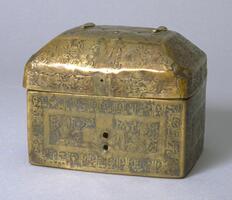
Iranian (Iranian)
Casket with inscription in floriated Kufic script
12th century
Museum Purchase
1959/1.113

Japanese (Japanese (culture or style))
Sutra Scroll Container with Cover
1167 – 1199
Museum purchase made possible by the Margaret Watson Parker Art Collection Fund
1983/2.248A&B

Chinese (Chinese (culture or style))
Jian Ware "Hare's Fur" Teabowl
1100 – 1299
Gift of Mr. and Mrs. Stephen H. Spurr
2003/2.19
![<p>The inner surface of this bowl features an incised design of two parrots with long tails resembling phoenixes. e entire body of the bowl was glazed including the rim of the foot, on which remain three quartzite spur marks. Although some fireclay has fallen inside the kiln during ring and adhered to the inner surface of the bowl, the state of sintering is good. The piece as a whole is a high-quality ware with a glossy surface and a fine color of glaze. The base of the foot is cracked which occurred while drying before the application of glaze.<br />
[<em>Korean Collection, University of Michigan Museum of Art </em>(2014) p.94]</p>
high quality, incised, double-parrot motif shallow bowl, nice shallow fully glazed foot, three spur marks, firing discoloration, kiln trash fall on glaze, 11th century. <p>The inner surface of this bowl features an incised design of two parrots with long tails resembling phoenixes. e entire body of the bowl was glazed including the rim of the foot, on which remain three quartzite spur marks. Although some fireclay has fallen inside the kiln during ring and adhered to the inner surface of the bowl, the state of sintering is good. The piece as a whole is a high-quality ware with a glossy surface and a fine color of glaze. The base of the foot is cracked which occurred while drying before the application of glaze.<br />
[<em>Korean Collection, University of Michigan Museum of Art </em>(2014) p.94]</p>
high quality, incised, double-parrot motif shallow bowl, nice shallow fully glazed foot, three spur marks, firing discoloration, kiln trash fall on glaze, 11th century.](/media/W1siZiIsIjIwMjIvMDkvMjQvNWdrcXY3YnBzbV9kZWZhdWx0LmpwZyJdLFsicCIsInRodW1iIiwiMjQweDIwMCJdXQ?sha=3c44f3270b71b87f)
Korean (Korean (culture or style))
Bowl with incised pattern of paired phoenixes
1067 – 1132
Gift of Bruce and Inta Hasenkamp and Museum purchase made possible by Elder and Mrs. Sang-Yong Nam
2004/1.215
![<p>This celadon bowl is decorated with mold-impressed designs, which was one of popular type of dishes in 11th and 12th centuries. On its inner walls are lotus scroll designs, and on its inner base is what is presumed to be a lotus flower design. Glaze has been applied all the way down to the rim of the foot, which retains traces of silica supports in three places. The yellow-green glaze is evenly spread on the surface, while the clay is of specially selected high quality, producing a smooth surface.<br />
[<em>Korean Collection, University of Michigan Museum of Art</em> (2014) p.111]</p>
<br />
shallow lobed bowl with molded lotus design on wall, 6 lobes, very small foot, high quality, need cleaning <p>This celadon bowl is decorated with mold-impressed designs, which was one of popular type of dishes in 11th and 12th centuries. On its inner walls are lotus scroll designs, and on its inner base is what is presumed to be a lotus flower design. Glaze has been applied all the way down to the rim of the foot, which retains traces of silica supports in three places. The yellow-green glaze is evenly spread on the surface, while the clay is of specially selected high quality, producing a smooth surface.<br />
[<em>Korean Collection, University of Michigan Museum of Art</em> (2014) p.111]</p>
<br />
shallow lobed bowl with molded lotus design on wall, 6 lobes, very small foot, high quality, need cleaning](/media/W1siZiIsIjIwMjIvMDkvMjQvMmx1M2ptNHMzM19kZWZhdWx0LmpwZyJdLFsicCIsInRodW1iIiwiMjQweDIwMCJdXQ?sha=2ba2ecc35e4531c3)
Korean (Korean (culture or style))
Saucer with molded floral design in center and lining rim
1050 – 1150
Gift of Bruce and Inta Hasenkamp and Museum purchase made possible by Elder and Mrs. Sang-Yong Nam
2004/1.223
![<p>The lid of this jar is carved with lotus petal design, crowned with the knob shaped as a lotus bud. Three refractory spurs are stuck to the inside of the lid. The shoulder of the jar is decorated with a descending willow design inlaid with white slip. The entire foot and outer base are glazed, but it is poorly fused and rough with impurities stuck to it. The lid retains a celadon color, but the jar itself is a light gray hue overall.<br />
[<em>Korean Collection, University of Michigan Museum of Art </em>(2014) p.134]</p>
<p>The lid of this jar is carved with lotus petal design, crowned with the knob shaped as a lotus bud. Three refractory spurs are stuck to the inside of the lid. The shoulder of the jar is decorated with a descending willow design inlaid with white slip. The entire foot and outer base are glazed, but it is poorly fused and rough with impurities stuck to it. The lid retains a celadon color, but the jar itself is a light gray hue overall.<br />
[<em>Korean Collection, University of Michigan Museum of Art </em>(2014) p.134]</p>](/media/W1siZiIsIjIwMjIvMDkvMjQvN2FsdDhlMjE5eV9kZWZhdWx0LmpwZyJdLFsicCIsInRodW1iIiwiMjQweDIwMCJdXQ?sha=e14cf9abceae9ee5)
Korean (Korean (culture or style))
Covered Cosmetic Jar
1167 – 1232
Gift of Bruce and Inta Hasenkamp and Museum purchase made possible by Elder and Mrs. Sang-Yong Nam
2004/1.243A&B

Chinese (Chinese (culture or style))
Fragment of Jian Ware Bowl
12th century
Transfer from the School of Art and the College of Architecture and Urban Planning
1997/1.285
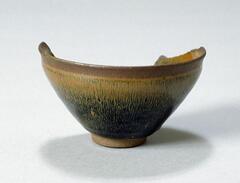
Chinese (Chinese (culture or style))
Fragment of Jian Ware Bowl
12th century
Transfer from the School of Art and the College of Architecture and Urban Planning
1997/1.287
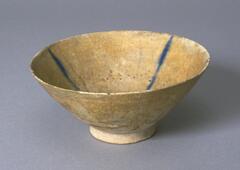
Iranian (Iranian)
Conical Bowl with simple blue stripe design
12th century
Museum purchase
1957/1.64
Loading…

